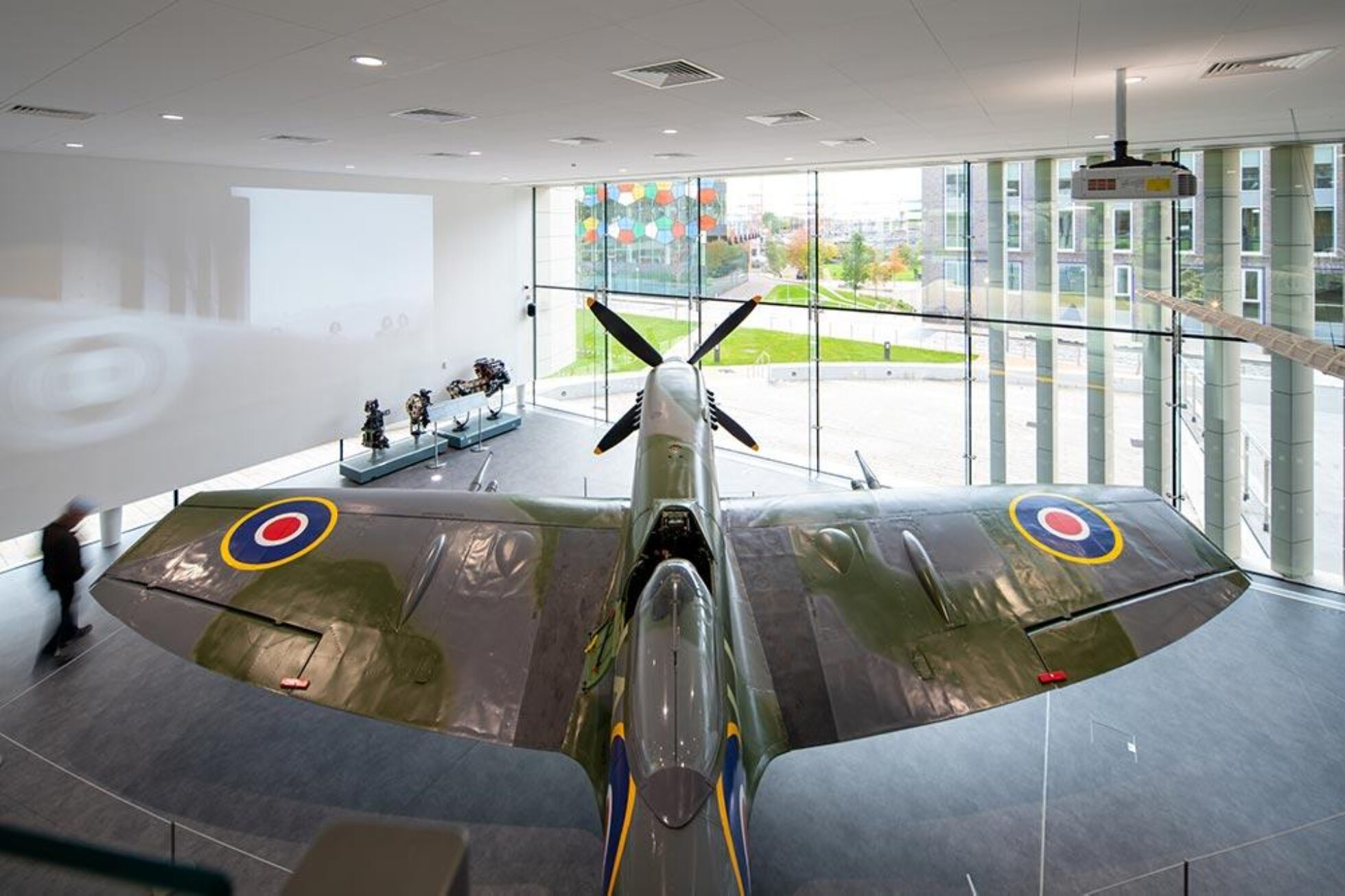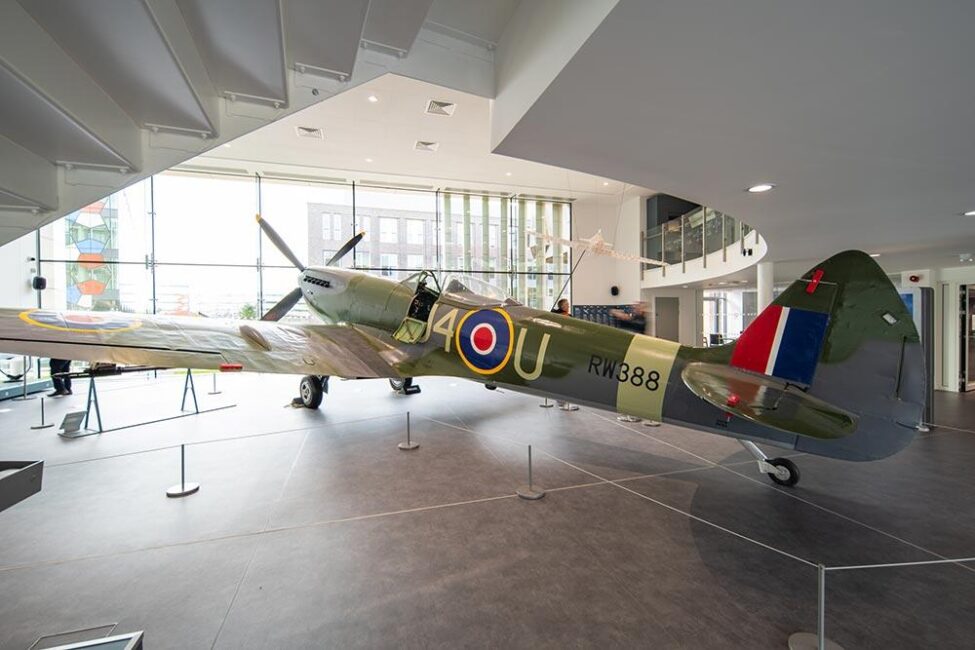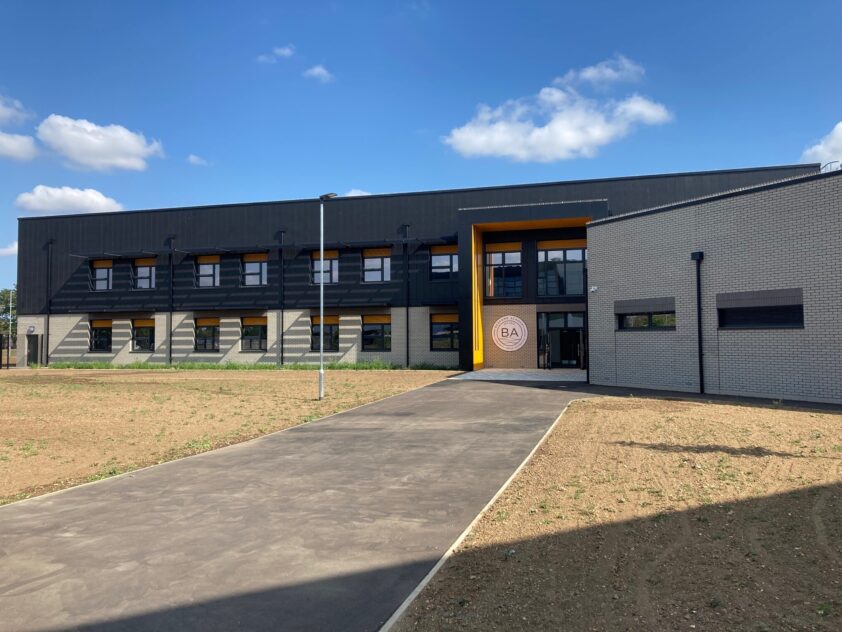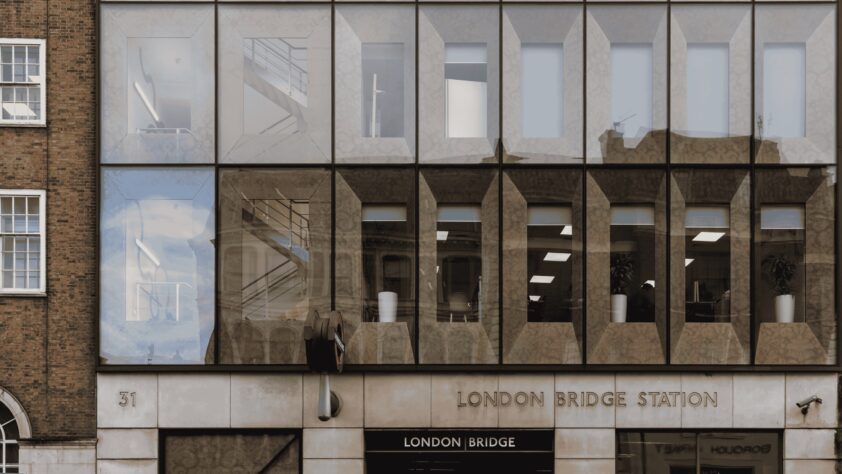Potteries Museum Spitfire Exhibition Hall, Stoke-on-Trent

Sector
Community
Value
£5,400,000
Status
Completed
Background
To celebrate the fact the original designer of the iconic Spitfire aircraft was born and raised in Stoke-on-Trent, the city council wanted to showcase the plane within a new dedicated exhibition hall, built as an extension to the Potteries Museum and Art Gallery. The project required the demolition of part of the cafe to create a physical link between the exhibition hall and the museum, in addition to refurbishment of the remaining café area and external landscaping of the area around the museum.
Requirements
As Stoke-on-Trent City Council's multi-disciplinary construction consultant for all services, including architecture provided by an SME sub-consultant, we developed workable designs to construct the extension on a challenging site to the south side of the museum. The completed building takes advantage of the site topography and makes the building visible from a distance, enhanced by a design incorporating copious glazing. The site around the museum benefits from landscaping and the creation of new pedestrian links between streets running alongside the museum, enhancing the aesthetic and accessibility for those walking to and around the site.
Outcomes
Our team coordinated a wide range of stakeholders including museum representatives. We also navigated challenging site logistics and ground conditions to progress the project - gas main diversion works commenced in late 2019.
We were able to complete concept and detailed designs on time in line with SCAPE’s BECS framework Performance Indicators, despite the challenge posed by a fast-track programme. This was enabled by fast appointment of our multi-disciplinary team, including appointment of expert tourism and leisure architect Glancy Nicholls through Perfect Circle’s well-established supply chain.
Challenges
A fast track design programme was required to meet the city council's timescales, leaving limited time for a full range of surveys and investigations to be completed, meaning the project had to proceed at a greater level of risk under our expert guidance. Time pressure was compounded by discovery of a gas main and district heating pipework running directly below the proposed building location, requiring diversions to be planned, approved and executed so construction of the extension could proceed.
With the site of the extension having a history of being used for coal mining, and with the site comprising made ground where the composition and loadbearing capacity were highly variable, we were required to carefully consider the presence of voids and select the correct design of foundations and the building structure.
The project demanded engagement with various stakeholders including the city mayor, planning officers, museum curator and the interest group responsible restoring the Spitfire. We needed to balance various design aspirations from different stakeholders, including the protection of historical artefacts from vibrations during ground investigations and the improvement of pedestrian accessibility outside the museum building. The museum cafe and theatre needed to remain operational throughout site investigations and enabling works, to limit the overall duration of the shutdown period.

Innovation
To accelerate the design programme and recover time lost by the gas main discovery, we collaborated with the design and build contractor, Morgan Sindall, to issue sub-contractor packages during the council's process to approve detailed designs, meaning we were able to mobilise to commence main construction immediately after the project received full council approval.
Due to the challenging ground conditions, we confirmed that piling deep through the layers of made ground was required to reach suitable ground beneath. This approach was supported by a lightweight structural design for the building, and the use of the museum building as a retaining structure.
To capture the museum stakeholders' aspirations and to ensure these expectations were being met, we implemented a coordinated communication and review strategy. This resulted in the development of a simple building design using maximum glazing and harnessing the elevation of the site to showcase the Spitfire, with the inclusion of a mezzanine platform inside the hall allowing aerial views of the aircraft. By engaging the museum curator and ground investigations contractor, we gained assurance that the level of vibrations would have no impact on artefacts within the museum.
Social Value
In celebration of Stoke-on-Trent's pottery industry heritage, the team’s designs for internal finishes incorporated ceramic features and specified the use of materials from a supplier in Stoke-on-Trent, supporting the local economy.

